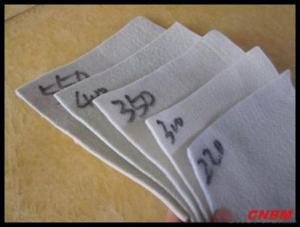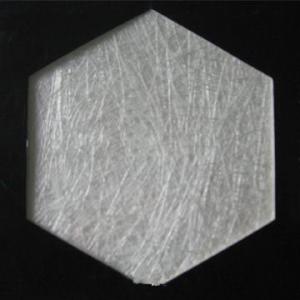Feutre Géotextile Castorama - Isolation Filament Polypropylène pour la Construction Routière
- Loading Port:
- China main port
- Payment Terms:
- TT OR LC
- Min Order Qty:
- 2000 m²
- Supply Capability:
- 10000000 m²/month
OKorder Service Pledge
OKorder Financial Service
You Might Also Like
Specification
Property:
1.High strength ; low deformation.
2. Durability: steady property, not easy to resolved, airslaked and keep the original property long term.
3. Anti-erosion: anti-acid, anti-alkali, resist insects and mould.
4. Permeability: the woven geotextile can control the sieve size to retain permeability.
Application
It is widely used in river , coast ,harbour, highway ,railway, wharf, tunnel, bridge and other geotechnical engineering. The woven geotextile is a invaluable product and can be separation, reinforcement , protection and other.
Product size
Width <=6.0m, length: 50(at request)
♦ Shipping:By sea or as your customize



Our Service
Quality assurance
1.On a regular basis or as per your request,we entrust national testing agencies to conduct quality inspections
2. Strictly in accordance with the ISO9001-2008 international quality system standard,we monitor and manage the whole process throughout production,quality testing,and measurement to ensure product quality
3. For quality-related construction delay or substandard construction(except for damage or losses due to customer’s responsibility or irresistible natural disasters),we have refunding,replacement,and repair services.We will respond to customers’ feedbacks on quality issues within 24 hours.
Q: What kind of payments does jenor support?
A: T/T, L/C, Cash are accepted.
Q: Do you charge for the samples?
A: Accordeing to our company policy, the samples are free, we only charge the freight fee. And we will return the freight fee during the next order.
Q: Can you produce according to customers' design?
A: Sure, we are professional manufacturer, OEM and ODM are both welcome.
Q: Do you have other products?
A: Yes, please check the pictures:
Packaging & Shipping
Packing: PLASTIC FILM INSIDE, AND WOVEN BAG OUTSIDE
Shipping: About 15 days after receipt the deposit
geotextile fabric
permeability,filtration,easy for construction
ISO and CE certificate
Good quality and competitive price
- Q: How do geotextiles aid in the reduction of liquefaction?
- Geotextiles aid in the reduction of liquefaction by providing reinforcement and stabilization to the soil. These synthetic fabrics are installed beneath the surface to improve the soil's strength and prevent its excessive movement during seismic activity. By increasing the soil's resistance to liquefaction, geotextiles help to mitigate the potential damage and hazards caused by this phenomenon.
- Q: Is the current tunnel construction, modular waterproof board (geotextile) is available?
- We use the soil is a geotech cloth waterproof board
- Q: Drainage board geotextile or gravel plus geotextile which water treatment effect is good
- Sure that the drainage board plus geotextile drainage effect is good, but the cost than the gravel Gao Hua Zhi geotechnical materials manufacturers to answer
- Q: Geotextile thinnest how many grams
- 80-100g, I am specializing in the production of geotextile geomembrane, wish smooth
- Q: What are the key considerations for geotextile installation in corrosive environments?
- The key considerations for geotextile installation in corrosive environments include selecting a geotextile material that is resistant to corrosion, ensuring proper installation techniques to minimize exposure to corrosive elements, and regular inspection and maintenance to monitor for any signs of corrosion or damage. Additionally, it is important to consider the long-term performance and durability of the geotextile in the specific corrosive environment to ensure its effectiveness and longevity.
- Q: What are the factors to consider when designing geotextile tubes for dewatering?
- When designing geotextile tubes for dewatering, several factors need to be considered. These include the type and characteristics of the sediment being dewatered, the desired dewatering efficiency, the required size and number of tubes, the hydraulic conditions, the site-specific environmental factors, and the available equipment and resources. Additionally, factors such as the strength and permeability of the geotextile material, the potential for clogging, and the long-term stability of the dewatering system should also be taken into account.
- Q: How do geotextiles contribute to pavement design?
- Geotextiles contribute to pavement design by providing reinforcement, separation, filtration, and drainage functions. These synthetic materials enhance the strength and stability of the pavement by distributing loads, preventing the mixing of different layers, filtering out fine particles, and improving water drainage. Geotextiles help in reducing pavement failures, extending its lifespan, and improving overall performance and durability.
- Q: Geotextile detection frequency
- First according to customer requirements grams / square meters, thickness, width, with or without the use of chemical fiber requirements, proofing, and the proofing process parameters, including feed speed, other machines and other parameters of the speed record, Do twenty to ten meters, to test, if qualified, to do so, a lot of bulk, do a few days and then try to seize what the general geotextile manufacturers themselves to prepare several commonly used testing equipment,
- Q: Is there a coinage between the embedded pipeline and the gravel blind ditch? Also on the backfill plant how to set the quota? Also ask the master advise! More
- You can go to the civil online forum to ask questions, there are a little more professional.
- Q: What kind of geotextiles are used to filter the geotextile?
- Short geotextile and filament geotextile
Send your message to us
Feutre Géotextile Castorama - Isolation Filament Polypropylène pour la Construction Routière
- Loading Port:
- China main port
- Payment Terms:
- TT OR LC
- Min Order Qty:
- 2000 m²
- Supply Capability:
- 10000000 m²/month
OKorder Service Pledge
OKorder Financial Service
Similar products
Hot products
Hot Searches
Related keywords































